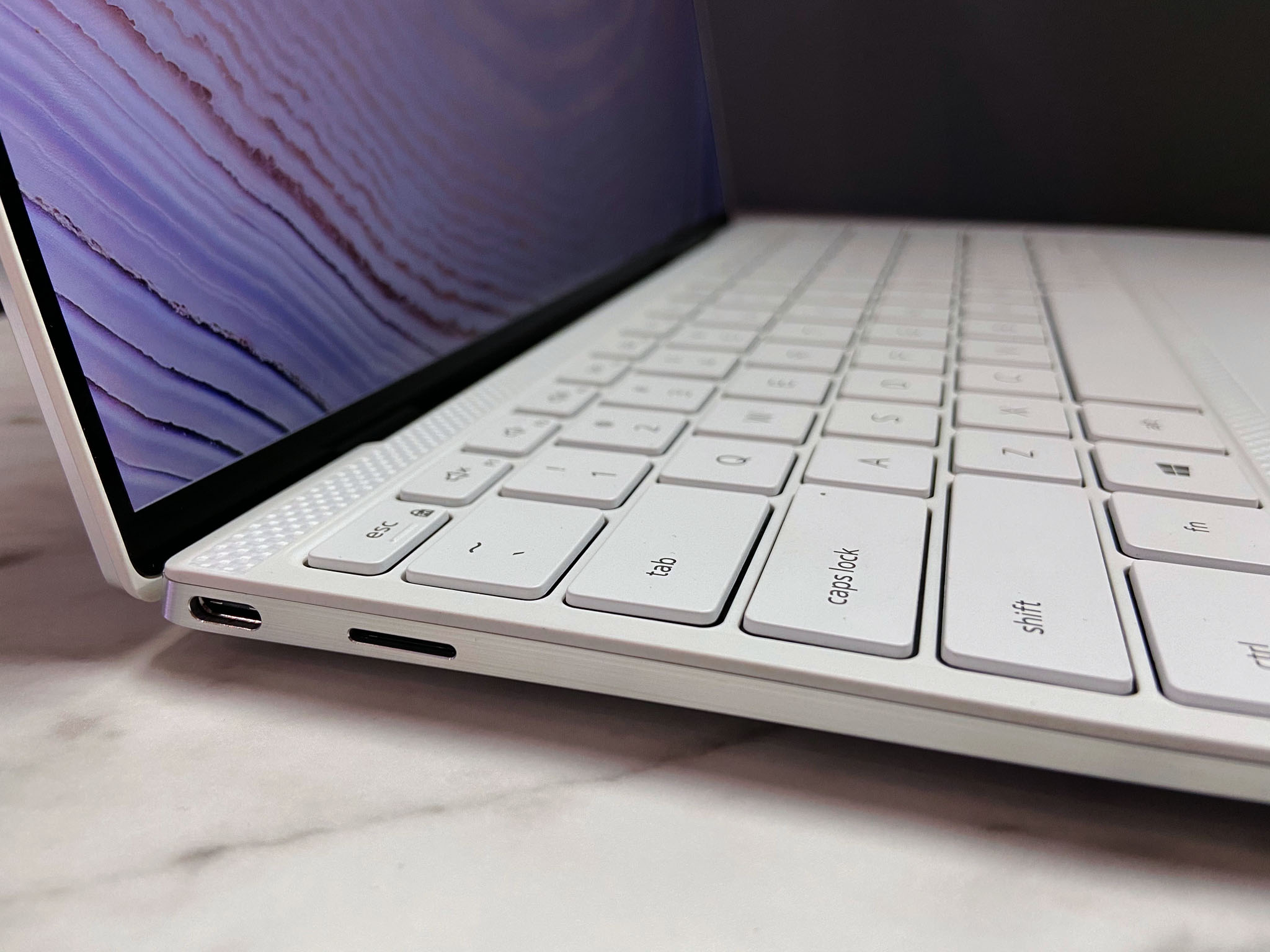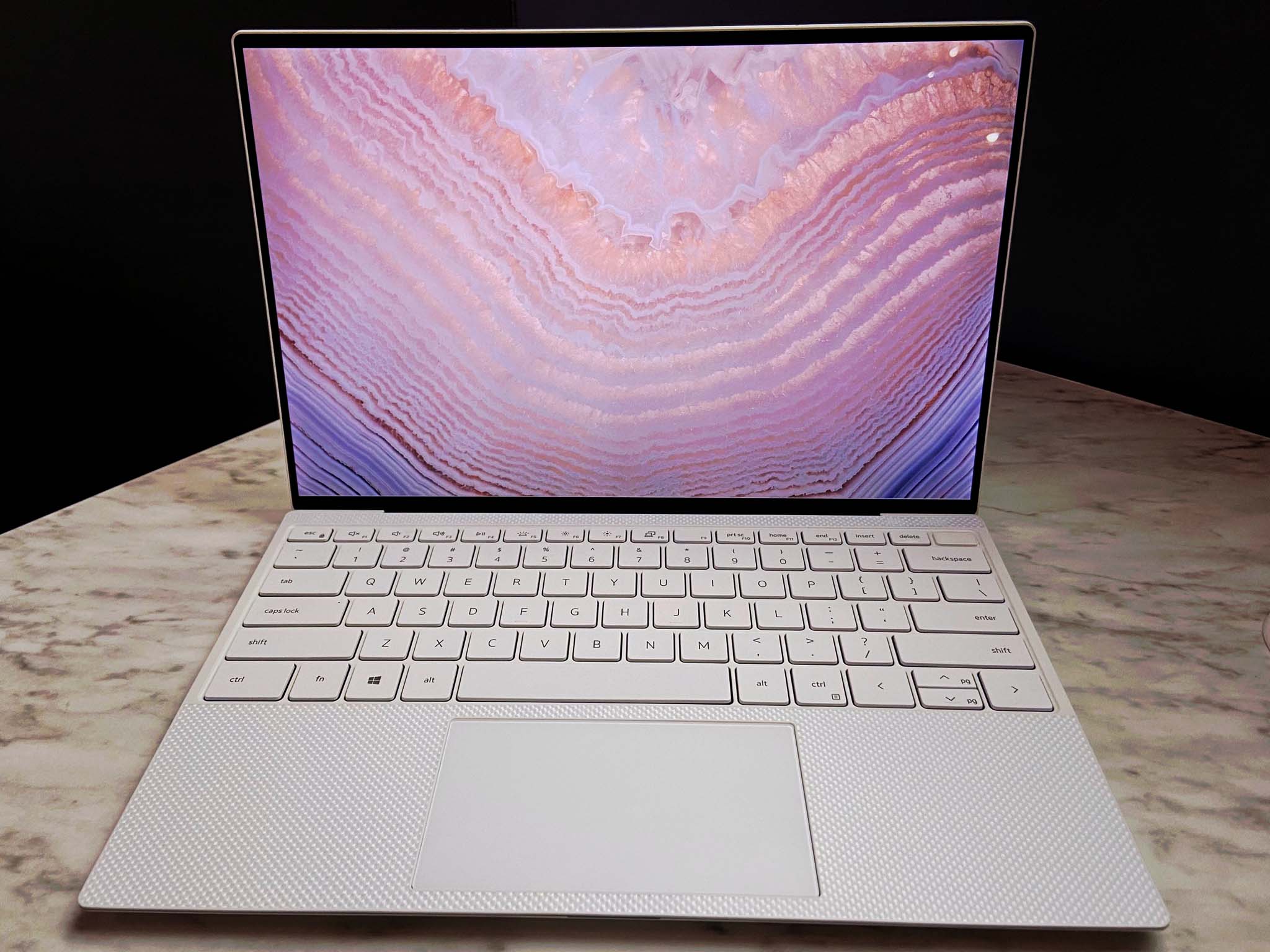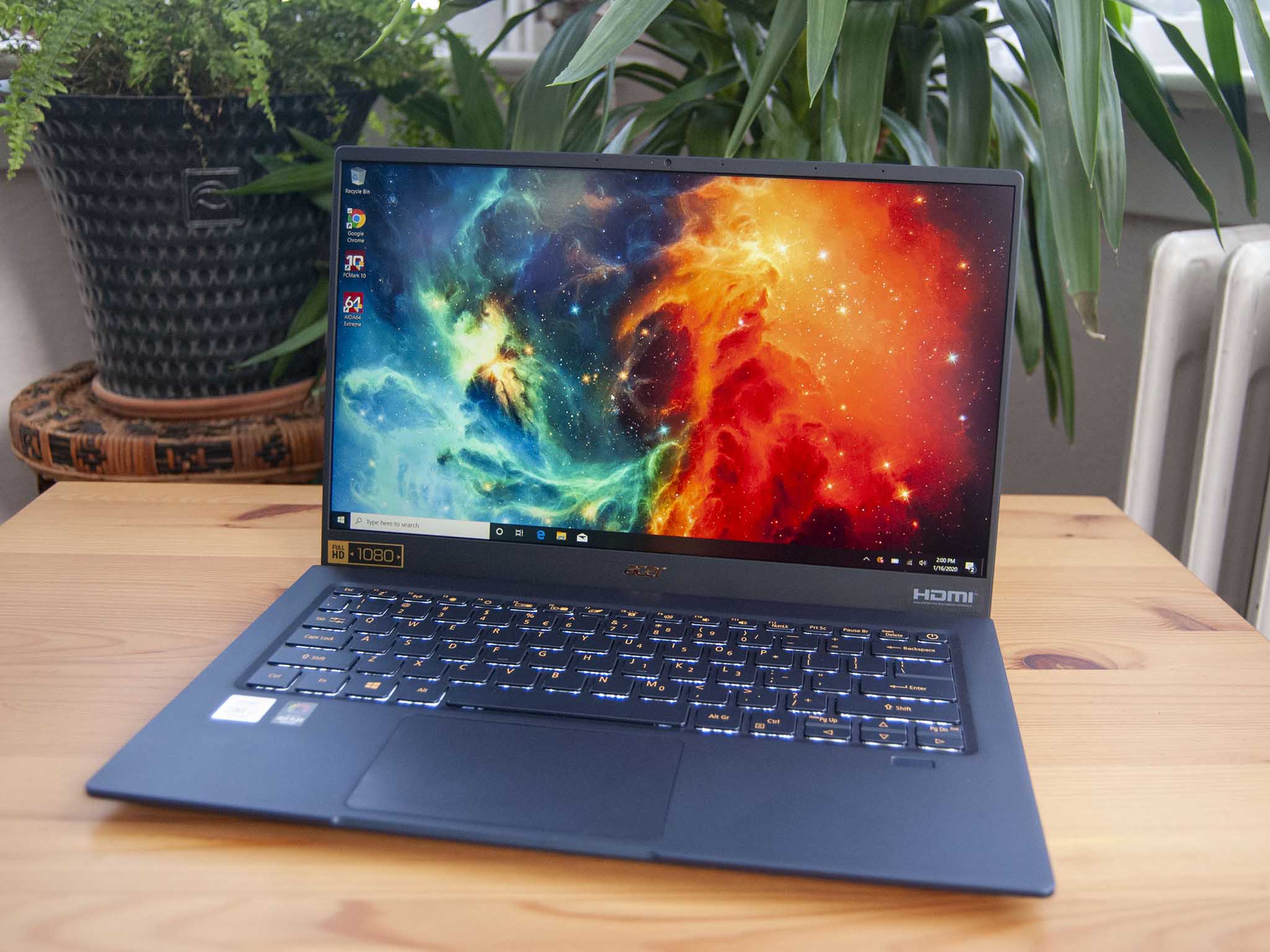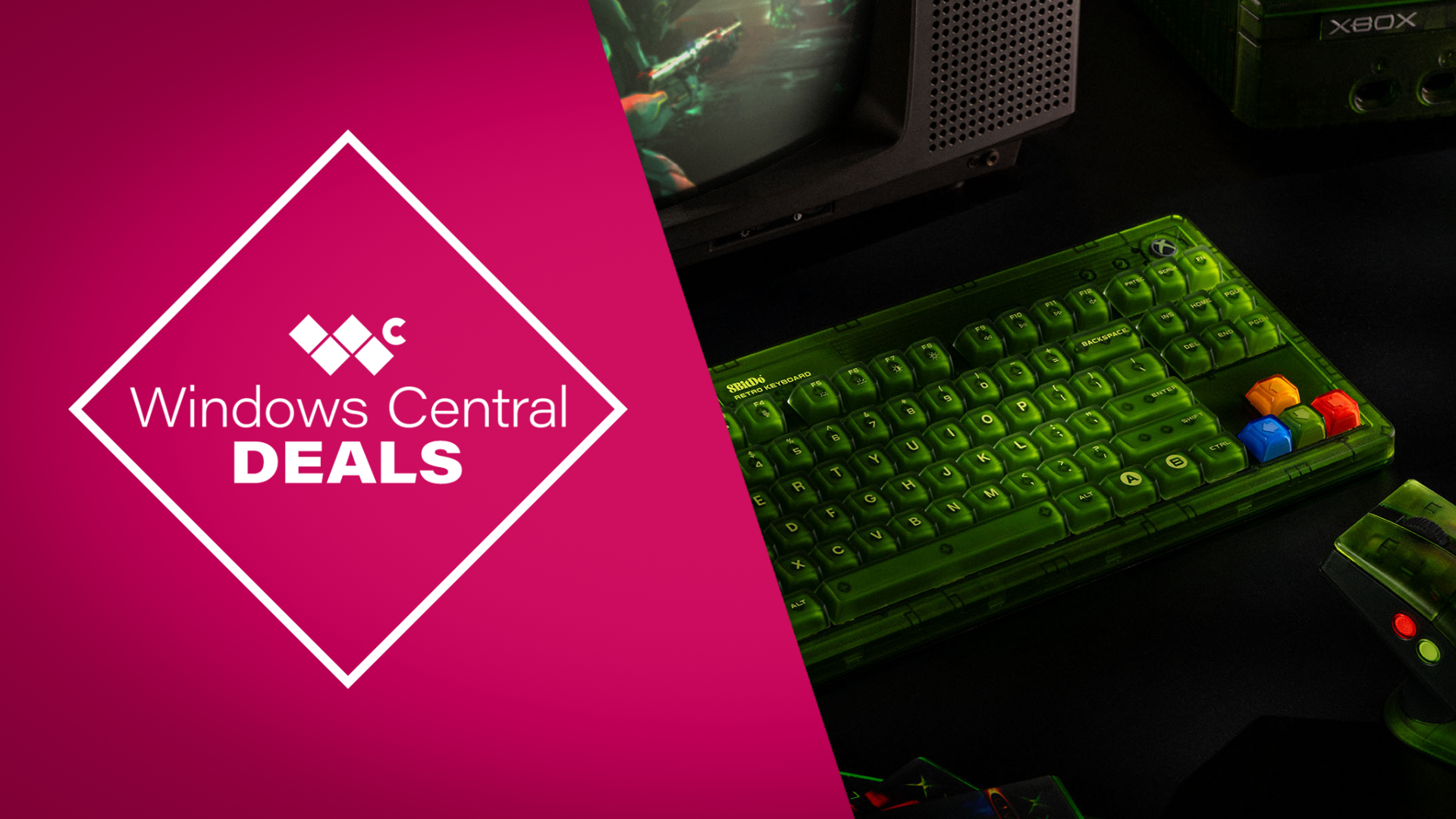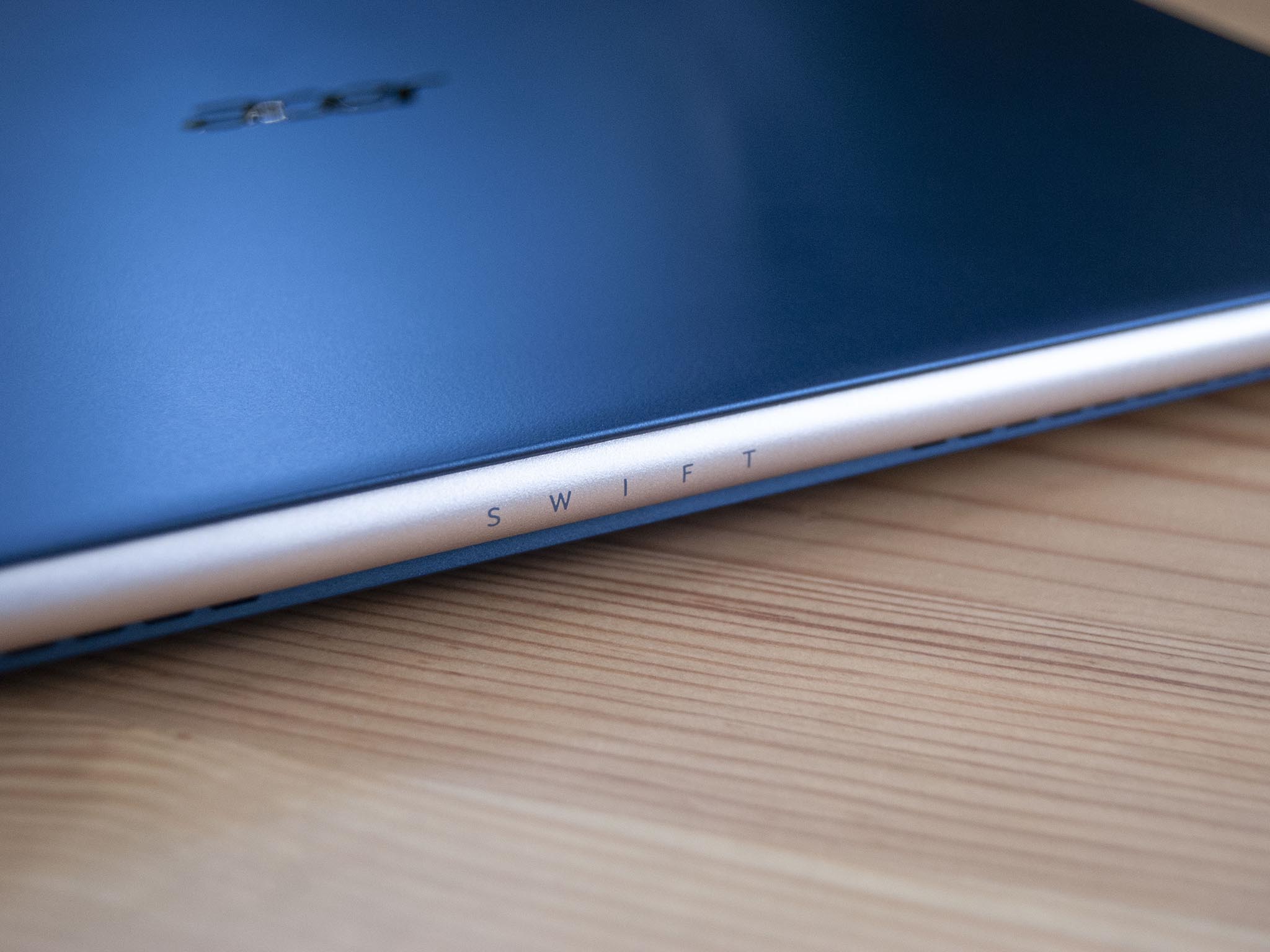
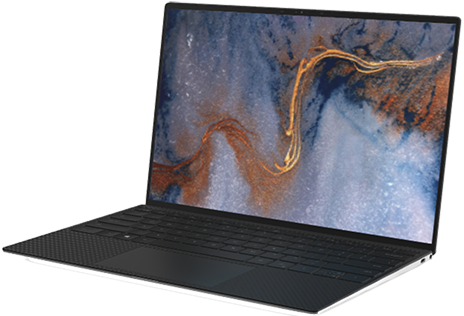
Hot new 13-inch Ultrabook
Dell's refreshed XPS 13 (9300) has a thinner bezel than ever before and a 16:10 aspect ratio for more screen space. The touchpad and keyboard keys are larger, and Intel's "Ice Lake" processors (CPU) are also included.
Pros
- 10th Gen Intel Core "Ice Lake" CPUs
- Beautiful aluminum chassis
- FHD or 4K display with 16:10 aspect ratio
- IR camera and fingerprint reader
- Wi-Fi 6, Bluetooth 5, and microSD card reader
Cons
- Limited to dual Thunderbolt 3
- Prices climb quickly
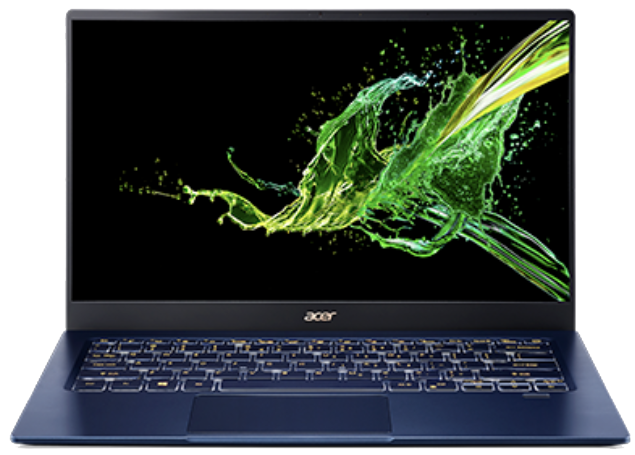
Ultralight 14-inch notebook
Acer's Swift 5 (SF514-54T) late-2019 refresh took the Ultrabook in the right direction. Its thin chassis does come with some tradeoffs, but excellent battery life and solid performance make it a recommended option for anyone traveling light.
Pros
- Incredibly thin and light
- Slim bezel and matte touch display
- Available at a cheaper price
- Better connectivity options
- 10th Gen Intel Core "Ice Lake" CPUs
Cons
- Frustrating fingerprint reader
- Not built to as high a standard
- Not as many configuration options
These two laptops have a lot in common, and they'll likely be on the shortlist for anyone shopping for a new 13- or 14-inch Ultrabook. The Acer Swift 5 is a more affordable option, at least with comparable hardware, while the XPS 13 is the premium pick that will cost significantly more as you scale up the internal specs. Let's take a close look at the two laptops to help you decide which is the better buy.
Dell XPS 13 vs. Acer Swift 5 tech specs
Here's a detailed breakdown of the exact specifications available in each laptop.
| Header Cell - Column 0 | Dell XPS 13 (9300) | Acer Swift 5 (SF514-54T) |
|---|---|---|
| Processor | 10th Gen Intel (10nm) Core i3-1005G1 Core i5-1035G1 Core i7-1065G7 | 10th Gen Intel (10nm) Core i5-1035G1 Core i7-1065G7 |
| RAM | 4GB, 8GB, 16GB LPDDR4 | 8GB LPDDR4 |
| Storage | 256GB, 512GB M.2 PCIe NVMe SSD | 512GB M.2 PCIe NVMe SSD |
| Display size | 13.4 inches Touch and non-touch | 14 inches Touch |
| Display resolution | 1920x1200 (FHD+) 3840x2400 (UHD+) | 1920x1080 (FHD) |
| Aspect ratio | 16:10 | 16:9 |
| Graphics | Intel UHD Graphics (i3, i5) Intel Iris Plus Graphics (i7) | Intel UHD Graphics (i5) Intel Iris Plus Graphics (i7) |
| Ports | Two Thunderbolt 3 microSD card reader 3.5mm audio | Thunderbolt 3 USB-A 3.1 USB-A 2.0 HDMI 3.5mm audio |
| Biometrics | Fingerprint reader IR camera | Fingerprint reader |
| Wireless | Killer AX1650 Wi-Fi 6 Bluetooth 5.0 | Intel AX201 Wi-Fi 6 Bluetooth 5.0 |
| Battery | 52Wh | 54Wh |
| Dimensions | 11.6 x 7.8 x 0.58 inches (296mm x 199mm x 14.8mm) | 12.55 x 8.29 x 0.59 inches (318.7mm x 210.5mm x 14.95mm) |
| Weight | From 2.65 pounds (1.2kg) | 2.18 pounds (990g) |
Design and features
Both the 13-inch XPS 13 and the 14-inch Swift 5 have a standard clamshell design with no convertible feature. The former Ultrabook is made from a single piece of aluminum, while the latter uses a magnesium alloy that offers a lighter overall build. The XPS 13 feels rigid, while there is some flex to the Swift 5, but both laptops should hold up well to average use.
Despite having a larger physical footprint and display than the XPS 13, the Swift 5 weighs almost half a pound less. At 2.65 pounds (1.2kg), the XPS 13 isn't exactly heavy, but if you want the lightest between the two, you have to go with the Swift 5. It almost feels unnatural when held, and you'll hardly notice it's tucked into a backpack when you're on the move.
Dell's laptop has seen its ports pared down over the years, and the latest 9300 model has arrived at dual Thunderbolt 3, a microSD card reader, and a 3.5mm audio jack. If you're only interested in connecting a powerful docking station or don't mind investing in some hubs and adapters the selection should suffice. However, if you'd like superior native connectivity, the Swift 5 includes Thunderbolt 3, dual USB-A, HDMI, and a 3.5mm audio jack. It is missing a microSD card reader, which is no doubt a downside for some people.
The Swift 5 includes a fingerprint reader compatible with Windows Hello built into the right-hand palm rest, though it's rather finicky and doesn't have an IR camera for facial recognition to back it up. Despite thin bezel around the display, Dell has managed to include an IR camera above the screen to accompany a fingerprint reader built into the XPS 13's power button.
A significant change to the XPS 13 9300 is the keyboard and touchpad combination. Dell has enlarged the keycaps by about 9%, and the touchpad has been blown up by about 17%. Keys stretch from edge to edge, and that Precision touchpad is excellent for productivity. Acer's Swift 5 also has a comfortable keyboard, but its keys are a bit smaller. The touchpad is also Precision and tracks well. We always recommend trying out a keyboard in person before buying a laptop, as personal preferences differ.
All the latest news, reviews, and guides for Windows and Xbox diehards.
Overall, the XPS 13 is built to a higher standard, and the price reflects it. You get a solid aluminum chassis, carbon fiber or glass fiber palm rest, and sharp lines. The Swift 5 doesn't feel quite as solid and side-by-side doesn't look as premium, but it's not far behind. Partly due to this reason, it is available at a cheaper price.
Display
Dell made the 13.4-inch display about 6.8% larger for the XPS 13 9300, with a 16:10 aspect ratio that's just a bit taller. Overall it offers a 91.5% screen-to-body ratio, which is quite impressive. The display seems to stretch to all edges, and there's hardly any chin below. It is available in a 1920x1200 resolution in non-touch and touch, offering brightness up to 500 nits. The non-touch model has a matte finish, while the touch model is "anti-reflective." There's also a UHD+ touch option (3840x2400) that hits 500 nits brightness, with 100% sRGB and 90% DCI-P3 color accuracy.
Acer's Swift 5 has a larger 14-inch display set at a more common 16:9 aspect ratio and 1920x1080 resolution. It has an 86.4% screen-to-body ratio with a slim bezel, and it has a matte finish to cut down on glare. It does only hit about 300 nits brightness, so working in well-lit areas won't be as easy compared to the 500 nits on the XPS 13. In our testing, the Swift 5's display hit 99% sRGB and 77% AdobeRGB for a rather full picture.
Performance and price
The XPS 13 9300 starts at about $1,000 for a model with 10th Gen Intel Core i3-1005G1 CPU, 4GB of LPDDR4 RAM, 256GB M.2 PCIe solid-state drive (SSD), and FHD non-touch display. Jumping up to an Intel Core i5-1035G1 CPU, 8GB of RAM, 256GB SSD, and FHD non-touch display, you're looking at about $1,250. A comparable Swift 5 model with Core i5-1035G1 CPU (there is no Core i3 config available), 8GB of LPDDR4 RAM, 512GB M.2 PCIe SSD, and FHD touch display costs about $900. That's $350 less than the XPS 13 for similar performance and a touch display to boot.
Both the XPS 13 and Swift 5 come with up to a Core i7-1065G7 CPU and 512GB SSD, though you can configure Dell's laptop with up to 16GB RAM while the Swift 5 caps out at 8GB. There is talk of a Swift 5 with an NVIDIA MX250 dedicated GPU and 16GB RAM, though so far, it doesn't seem to be available. The XPS 13 does not have an option for a dedicated GPU, and there's no expectation for a future upgrade.
Both laptops are equipped with Bluetooth 5 and a Wi-Fi 6 adapter, allowing you to be set up for incredibly fast wireless internet. The XPS 13 is part of Intel's Project Athena and features instant-on and excellent battery life. We will have to do our own tests, but expect at least a full workday of life from a charge. The Swift 5 is not part of Project Athena, but it still wakes incredibly quickly and delivers a solid eight hours of life from a charge (with more time if you're not pushing it).
These laptops are going to deliver similar performance thanks to both using Intel's 10th Gen "Ice Lake" CPUs, and you'll have to decide if you want to spend the extra money on all the extra bells and whistles that come with the XPS 13. Dell also makes it much easier to get precisely the laptop you want, with multiple configurations available for customization. The Swift 5, on the other hand, is currently available in two configurations with no customization options.
The XPS 13 (9300) has more options available for more people
You're going to pay more for an XPS 13, but Dell makes it easy to get precisely the laptop you want. There are plenty of customizable XPS 13 configurations available, including up to a 4K touch display. It's built to a higher standard, and it comes with more user-friendly features. It's not as light as the larger Swift 5, but it's still a portable option.
Acer's Swift 5 makes sense for anyone who travels light
The incredibly light Swift 5 doesn't have quite the same premium flair as the XPS 13 — nor does it have nearly as many configuration options — but it is more affordable. It also has a larger display and footprint, yet it weighs less. It impressed us enough that we gave it a Recommended Award in our review.

Cale Hunt brings to Windows Central more than nine years of experience writing about laptops, PCs, accessories, games, and beyond. If it runs Windows or in some way complements the hardware, there’s a good chance he knows about it, has written about it, or is already busy testing it.

